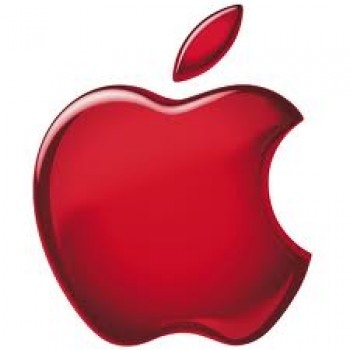Apple Inc. (NASDAQ:AAPL) manufacturing partner Pegatron recently gave projections of 40%-50% growth in its “non-computing” segment for the 3rd quarter. This points squarely in the direction of a much-rumored “cheap iPhone” being a reality. And with domestic demand of the iPhone remaining robust, many think that this new product will be aimed, at least in part, at the Chinese market. This brings one question to mind: Will this restart Apple’s growth engine?
iPhone still the king, but will it rule in China?

This growth is even more impressive when we consider that Apple Inc. (NASDAQ:AAPL) is yet to make a serious move into China, with less than 10% of the smartphone market. However, if this new iPhone is destined for the Chinese market, as recent meetings between Apple CEO Tim Cook and China Mobile Ltd. (ADR) (NYSE:CHL) Chairman Xi Guohua indicate it could be, China Mobile’s 700 million subscribers could indeed reignite growth for Apple.
China Mobile Ltd. (ADR) (NYSE:CHL) has much to gain from a partnership, as the only major Chinese wireless provider that doesn’t offer the iPhone. This is primarily a result of China Mobile’s decision to use proprietary technology for its G3 network, leading to poor manufacturer support, and only about 18% adoption by its customers, compared to China Unicom and China Telecom’s 38% and 50% subscriber uptake. However, with a planned $30 billion in updates and expansion of its network in 2013, including a significant amount of that being spent on industry-standard LTE 4G, adding the iPhone to the mix could result in significant growth in smartphone users, and the increased revenues from data subscriptions that come along for the ride.
iPads are still key
The reported 14% drop in iPad shipments is concerning. However, the number normalizes to a 4% decrease when we factor out the inventory ramp up in the year-ago quarter on the launch of the Retina version. This quarter did not see a new model, and there were a number of strong competitive offerings. However, it’s important to remember that Apple Inc. (NASDAQ:AAPL) still commands nearly ont-third of the tablet sales market, shipping nearly 45% more units than closest competitor Samsung. If Apple does indeed unveil something new to us on September 10, we can expect to see a refreshed version of the iPad, and likely of the iPad Mini as well.
It’s worth noting that Amazon.com, Inc. (NASDAQ:AMZN) also is losing market share. Its Kindle Fire tablets held the fifth position in shipments in IDC’s last report; however, the kind of the web retailers is no longer listed in the top five. While it continues to expand into just about every other market imaginable, it seems that the company’s “loss leader” model of getting tablets out there as cheaply as possible as a means of driving digital sales may not be as effective as Amazon was hoping, as it’s losing market share to traditional computer makers like Acer and Lenovo Group Limited (ADR) (OTCMKTS:LNVGY).
The company’s recent decision to lower the price of the Kindle HD to $159 points to the company attempting to regain market share. However, it’s probably also a matter of the company getting ready to launch new models for the holiday shopping season. The company is clearly willing to cut its way into the tablet market, and you can bet that the additional revenue from digital content sales generated by Kindle Fire users is a big part of why. Amazon.com, Inc. (NASDAQ:AMZN) has consistently grown annual sales by more than 20% for most of the past decade, and profitable digital content is an important part of this growth. So it should come as no surprise that the company will subsidize the price of its tablet devices to drive this growth higher.
One more thing
Apple Inc. (NASDAQ:AAPL)’s revenue growth has slowed over the past year, and EPS has actually fallen the past several quarters, largely on the lack of its tablet and PC businesses slowing, and the average selling price of the iPhone falling measurably.
But as we see from Amazon.com, Inc. (NASDAQ:AMZN)’s (lack of) sales growth for its own tablets, and recent price drop in response, it’s not the bottom of the tablet market that’s cutting into Apple Inc. (NASDAQ:AAPL)’s sales. Simply put, the middle of the market is giving consumers more choice, and Apple just didn’t have the head start in tablets that it did in smartphones to keep growing this segment. However, Cook has promised us that new products are on the horizon, and this will help.
Looking for predictable growth and income is really hard with tech companies, even ones as successful as Apple Inc. (NASDAQ:AAPL) has been over the past decade. So counting on rumors of a smartwatch or a TV to reinvigorate growth isn’t a bet I’d be willing to take. A safer call is that tapping into China Mobile Ltd. (ADR) (NYSE:CHL)’s LTE expansion with the well-established iPhone, should lead to a great source of growth moving forward. Another product category would just be a bonus. Luckily, we don’t have to count on it for Apple to do well.
Jason Hall owns shares of Apple and Amazon.com. The Motley Fool recommends Amazon.com and Apple. The Motley Fool owns shares of Amazon.com, Apple, and China Mobile.
The article Is a “Cheap” iPhone Destined for China? originally appeared on Fool.com and is written by Jason Hall.
Copyright © 1995 – 2013 The Motley Fool, LLC. All rights reserved. The Motley Fool has a disclosure policy.





